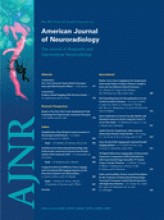A. Nógrádi, ed. New York: Springer; 2006, 160 pages, $149.00.
Cellular treatment targeting spinal cord injury is an extremely exciting research area that holds great hope in repairing the nervous system after injury. Through the use of adult as well as embryonic stem cells, many research articles have recently appeared in the literature that highlight various methods of promoting recovery after injury. This book is organized into 5 major chapters assessing spinal cord injury as well as replacement strategies targeting different cellular populations. The 1st chapter describes the anatomy and physiology of the spinal cord and will be of teaching value to students in the field of neuroanatomy and spinal cord injury. Subsequent chapters describe the capacity of the injured spinal cord to recover and discuss various treatments targeting populations of damaged cells or bridging strategies. For example, in chapter 3, a rich literature is summarized regarding brain stem monoaminergic neurotransmission, which functions in the control of movement. In chapters 4 and 5, the use of nerve cell bridges, glial cells, or biomaterials, as well as transplantation of embryonic nervous tissue in the injured spinal cord are discussed.
Finally, chapters 6 and 7 specifically discuss the transplantation of various types of cells to replace different adult cells. Thus, the chapters cover a wide breadth of experimental studies targeting spinal cord injury. The publication may be relevant to the neuroradiology audience in terms of interest in repairing the spinal cord after injury. The book does not concentrate on imaging approaches but does have some informative illustrations regarding the spinal cord and its various nerve connections. Thus, from the neuroanatomy standpoint, these may be informative to this particular audience.
The subject of spinal cord injury is extremely complicated, and it would be very difficult for 1 book to cover all the major aspects of this subject and the different scientific investigations targeting this problem. However, I think the book does highlight many of the major areas of investigation currently being addressed in this area. Also, few books have been written that provide a comprehensive discussion of transplantation strategies targeting spinal cord injury. Thus, this book is extremely helpful in that regard. Images throughout the book are easy to read, with appropriate figure legends to explain the major conclusions being made by the authors. The chapters contain a comprehensive list of appropriate references that are current and published in the leading neuroscience journals. I would recommend this book to audiences interested in spinal cord injury and the discussion of novel strategies directed toward repairing the injured cord.

- Copyright © American Society of Neuroradiology











